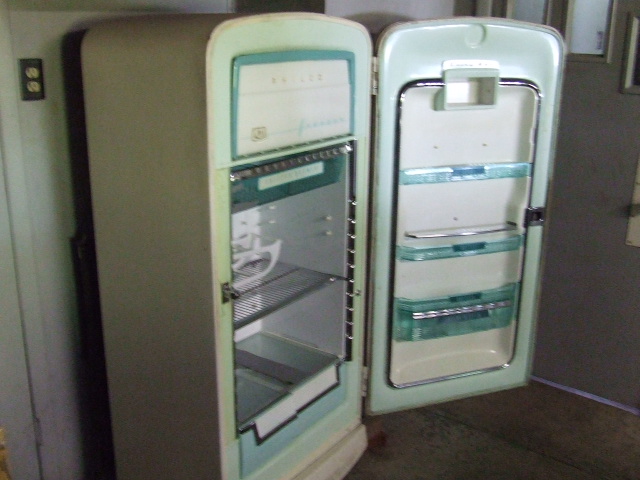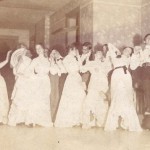When the Indiana Extension Homemakers Association conducted a series of oral histories in the 1980s, asking women what their lives had been like in the early decades of the 20th century, Thelma Roehr from Posey County had no problem replying to the question “Which major appliance do you think has changed your life the most?” Her answer: “The icebox and the refrigerator”.
Even on the hottest days of the summer, modern Hoosiers can open a door and find cold milk, a pitcher of lemonade, fresh fruits and vegetables, eggs, and meat in their refrigerator/freezer. Before the advent of electricity in many rural areas of Indiana, women were not so fortunate. The most obvious solution to lack of refrigeration was to consume quickly anything that might spoil. Isabel Schoeff remembered that she never planned “on having milk items for the evening meal. You always used the milk at noon”. Helen Musselman related that her grandmother always cleaned and dressed a chicken the day she was going to serve it for dinner.
Some women had a cellar where they could store things for a few hours or a day. Farm women, if they were fortunate, had a spring running through their land and a springhouse in which cold water could keep some things, such as butter and eggs, for a short period. Other farmers built an ice house near a large pond or stream, harvested ice during the depths of winter, and then used the huge blocks of ice to keep food fresh.
Many farm kitchens eventually contained an icebox, which would hold ice in 25-, 50-, 75-, or 100-pound blocks. Getting ice into the kitchen was still a challenge—Beulah Mardis recalls that on her parents’ Johnson County farm, she could make trips out to the icehouse “but when you go 2 ½ miles in the buggy to get a lump of ice, you don’t have very much when you get home, so we didn’t have ice very much”. Iceboxes also had to be emptied as their ice melted down into water. A woman who forgot to empty the pan under the icebox could find, as Betty Alvey did, that “you would maybe get up in the middle of the night and step in ice-cold water running across the kitchen floor”.
Women who kept house before the advent of electricity and modern appliances understood what an innovation the electric refrigerator/freezer was. Eighty-one-year-old Vernell Saltzman was asked “What would you hate to give up the most, comparing the things you have now with the things you started housekeeping with years ago?” Her answer—“If I had to do without, I believe my refrigeration. Because I could dab around to wash my clothes, I could have candlelight or coal oil lights and, if necessary, I could take a broom and sweep. But I couldn’t fix cool things, and I would miss cool things”.
Source: Eleanor Arnold, ed., Party Lines, Pumps and Privies, vol. 2: Memories of Hoosier Homemakers.
A Moment of Indiana History is a production of WFIU Public Radio in partnership with the Indiana Public Broadcasting Stations. Research support comes from Indiana Magazine of History published by the Indiana University Department of History.























